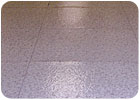You have 0 Articles Left This Month. Join Today for Unlimited Access.
Stay in the know on the latest restoration trends.
Stay ahead of the curve with our eNewsletters.
Get the latest industry updates tailored your way.
JOIN TODAY!Copyright ©2024. All Rights Reserved BNP Media.
Design, CMS, Hosting & Web Development :: ePublishing
 I began searching for the answer almost 26 years ago, and my quest continues to this day. My passion for concrete came at a young age, when the little bugger seemed to start controlling my fate more than ever before, as our floor covering installations started to fail as a result of moisture. Prior to this, I’d been safe and happy for years. But when EPA regulations were implemented, and the budget considerations and fast-track construction of the late 80s came into play, installations that once worked no longer sufficed. As I’ve searched through the years I’ve found comfort in knowing I was in good and brilliant company, but you would think that, after decades of study and analysis, we would be closer to some firm answer.
I began searching for the answer almost 26 years ago, and my quest continues to this day. My passion for concrete came at a young age, when the little bugger seemed to start controlling my fate more than ever before, as our floor covering installations started to fail as a result of moisture. Prior to this, I’d been safe and happy for years. But when EPA regulations were implemented, and the budget considerations and fast-track construction of the late 80s came into play, installations that once worked no longer sufficed. As I’ve searched through the years I’ve found comfort in knowing I was in good and brilliant company, but you would think that, after decades of study and analysis, we would be closer to some firm answer.